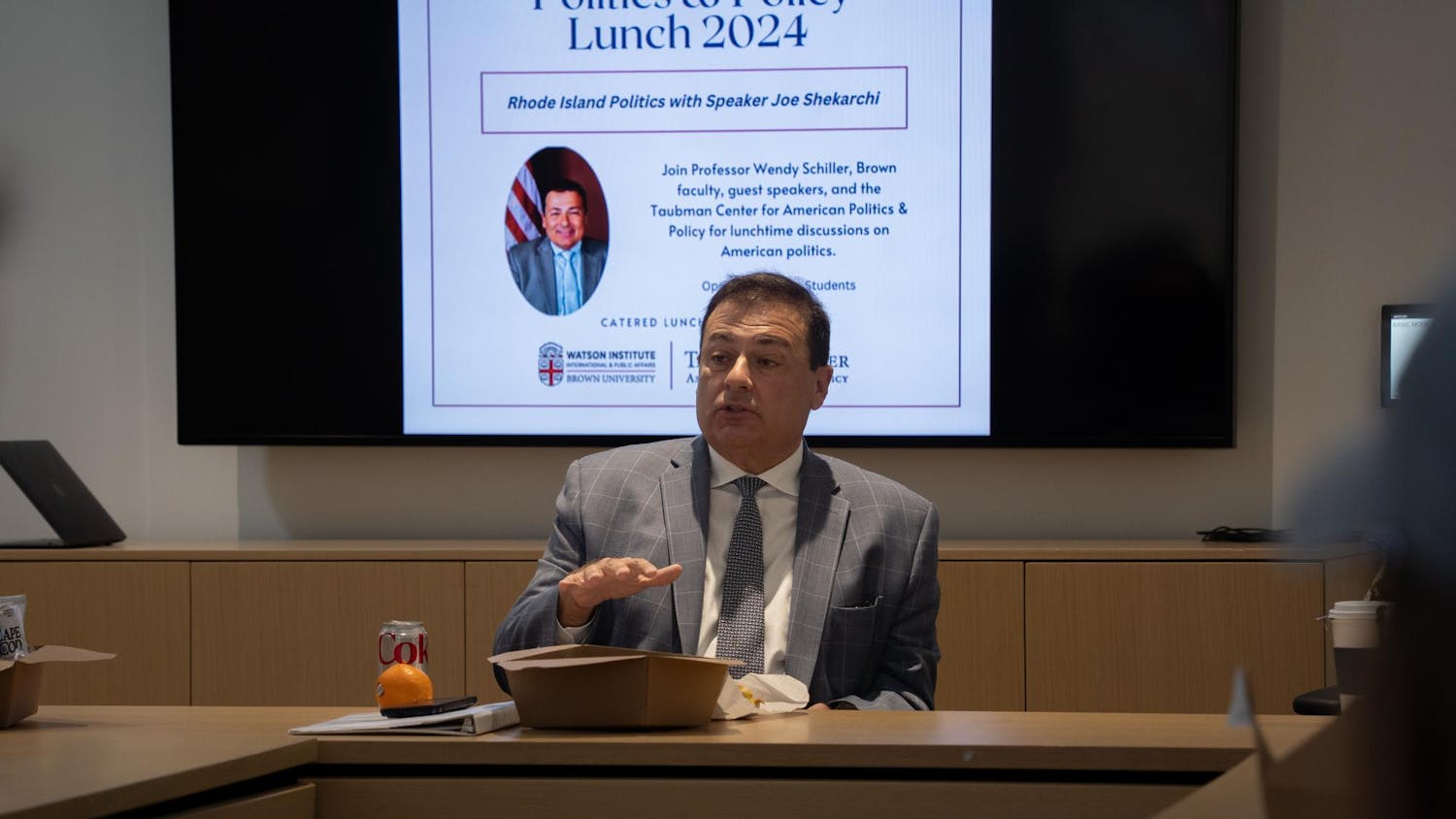"Our universe may not be the only universe," Brian Greene told avid fans, physicists and even humanities concentrators last night. The idea that our universe is the only one is giving way to the possibility of a multiverse, or multiple universes. This universe may be a tiny speck in an infinite space containing other realities.
Greene, a professor of physics and mathematics at Columbia, has written several bestselling books that use humor, analogies and visualizations to untangle complicated concepts like string theory for the general reader. Greene accomplished the same feat in last night's lecture, walking the audience through the Big Bang theory and string theory in just over an hour. Several students in the audience, both science concentrators and those from other disciplines, said Greene did an excellent job making the material accessible, interesting and easily understandable.
Greene said he believes communicating science is important because "without having a general public that is willing and able to engage in science, you can't ultimately have a democracy."
"Think of a deck of cards," Greene told the audience. If the deck is shuffled, the cards come out in different orders. But there are a finite number of different orders, which means if the deck is shuffled enough times, then sooner or later, the order of the cards has to repeat. Similarly, if space goes on infinitely far, then there are infinitely many regions like ours — just as with the deck of cards, sooner or later the particle order has to repeat. We are all just a particular arrangement of particles, Greene continued. So if this arrangement repeats, "that means there are copies of you and me and the Earth and the sun, and everything we know about is happening over and over and over again." This is the most direct conceptualization of parallel universes. Within the laws of physics, all possible realities are taking place.
"Does that mean that in one of those realms, Sarah Palin is president?" Greene said people have asked him. But he said he has to remind them that the realm "must be compatible with the laws of physics."
Greene included many computer simulations throughout the lecture, effectively engaging the audience. MacMillian 117 was briefly transformed into a movie theater as the entire auditorium, filled to capacity, watched an animation of the origin of our universe 14 billions years ago after the Big Bang. But the Big Bang theory leaves out one crucial part, Greene said. It leaves out the "bang."
Greene went on to explain an idea about what created the bang — dark energy that gives rise to repulsive gravity that can push things apart. Filling in this gap in the theory creates the possibility of other universes. With the amount of dark energy measured by scientists, at least 100 to the 124th power other universes must exist.
"It made one feel small," said Maya Wei '13 about Greene's lecture, hosted by the Brown Lecture Board. Other students who attended expressed similar feelings. "He changed my perspective of the world," Alan Shan '14 said.
Greene also tackled string theory, which seeks to unify theories of matter, forces and relativity. The conventional idea is that everything is made up of molecules, which consist of atoms that are made up of electrons, protons and neutrons. The idea stops at the level of quarks, but string theory proposes that inside these particles are tiny, string-like, vibrating strands of energy. The mathematics behind this theory require 10, rather than three, dimensions of space.
Greene discussed the possibility of other dimensions, which are "curled up" too tightly to be observed. These extra dimensions all have their own shape, and there are up to 100 to the 500th power potential shapes. The immense number of shapes profoundly affect the multitude of universes composing the multiverse.
Before the lecture, Greene told The Herald an understanding of string theory is relevant to nonscientists just as Beethoven's "Fifth Symphony" or the Mona Lisa is relevant to everyone. "Even if you don't study science, the ideas can really transport you," he said.
Catherine Teitz '14, a classics concentrator, said the lecture inspired her to pursue science. "This reminded me that pursuing the scientific aspects of study, even within the humanities, is essential to a fuller understanding of any field."
Greene ended his lecture by challenging the audience to think about "the possibility that our universe is like a single grain of sand on this huge beach of universes." He concluded with a sense of wonder — "That upheaval in our understanding of reality would be spectacular, and frankly, I can't imagine really anything more thrilling than that."




